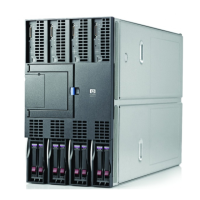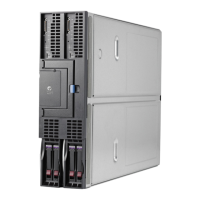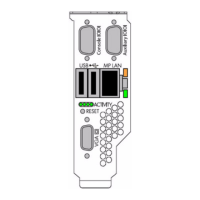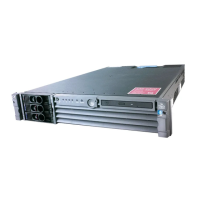Teaming Software Components
HP Integrity Network Adapter Teaming consists of three components: the Miniport driver,
Intermediate driver, and configuration GUI.
Network Adapter Miniport Driver
The Miniport driver used with the HP network adapter is e1g6064.sys or e1e6064.sys or
b57nd60i.sys, depending on the adapter in use.
Teaming Intermediate Driver
The Intermediate driver is CPQTEAM.SYS, and is used for all teaming functions involving HP
Integrity supported adapters.
HP Network Configuration Utility
The configuration GUI is called the HP Network Configuration Utility (NCU) and the file name
is CPQTEAM.EXE. The configuration GUI is accessible from the Control Panel or from the Tray
icon (unless disabled).
These three components are designed to work as a single unit. When one is upgraded all
components must be upgraded to the current version. For driver updates to HP network adapters
and HP Integrity Network Adapter Teaming, visit http://h18004.www1.hp.com/support/files/
networking/us/index.html.
HP Teaming and Layer 2 Versus Layer 3 Addresses
One of the most important concepts to understand when implementing HP Integrity Network
Adapter Teaming is that of Layer 2 and Layer 3 addresses, and the way they are handled. When
network adapters are teamed together, they function as a single virtual network adapter. Other
network devices (for example, PCs, other servers, routers, etc.) communicating with an HP
network adapter team cannot distinguish that they are communicating with more than one
network adapter. In addition, HP Integrity Network Adapter Teaming must maintain strict IEEE
standards compliance in its use of Layer 2 and Layer 3 addresses.
In order for an HP network adapter team to appear as a single virtual network adapter, it is
necessary for all networking devices to refer to the team by a single Layer 2 address and a single
Layer 3 address. In other words, when a device is communicating with a team, regardless of the
number of network adapters that make up the team, the network device only “sees” one MAC
address and one protocol address (for example:IP, IPX). When communicating using IP, this
means that a networking device will have only one entry in its ARP (Address Resolution Protocol)
cache for an HP network adapter team regardless of the number of network adapter ports that
make up the team.
When an HP network adapter team initializes, the teaming driver for each team “reads” the
burned in MAC address (BIA) for each network adapter assigned to that particular team.
Essentially, the MAC addresses are decoupled from the network adapters and pooled together
for use by the teaming driver. The teaming driver picks one MAC address as the team’s MAC
address and assigns it to the Primary adapter, unless the user has manually set the MAC address
(Locally Administered Address) via the NCU. For all team types other than Dual Channel, all
ARP replies from the server for this particular HP network adapter team provide this same MAC
address as the team’s MAC address. This address does not change unless the team is reconfigured.
The teaming driver assigns the remaining MAC addresses to the Non-Primary adapters.
When a failover event occurs, the MAC addresses of the current Primary adapter and one of the
Non-Primary adapters are swapped. The former Non-Primary adapter becomes the new Primary
adapter and the former Primary adapter becomes a Non-Primary adapter. By swapping the MAC
addresses in this manner, the HP network adapter team is always known by one MAC address
and one protocol address. It is unnecessary for protocol addresses to swap during a failover
30 The Mechanics of Teaming for the Advanced User

